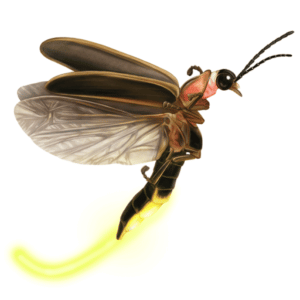Notice: Below is a list of 0 important links included on this page.
Please note that while screen readers have made significant strides, they may still lack full support for optimal web accessibility.

You must be logged in to post a comment.
This is a project of the Xerces Society, working in collaboration with the IUCN SSC Firefly Specialist Group and New Mexico BioPark Society.
Copyright © 2025 The Xerces Society •1631 NE Broadway Street, #821 • Portland OR 97232 USA
At this time of year, the only lightning bug species with adults out and flashing is Pyractomena borealis, the “spring treetop flasher.” Later in the season, determining species from just a sighting of flashes is much more challenging.